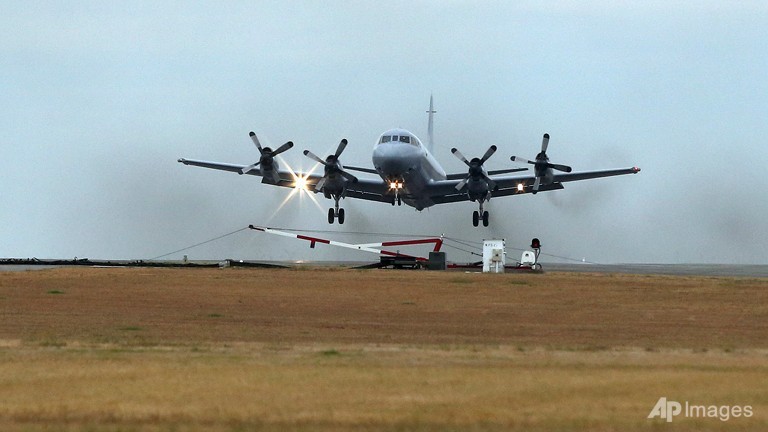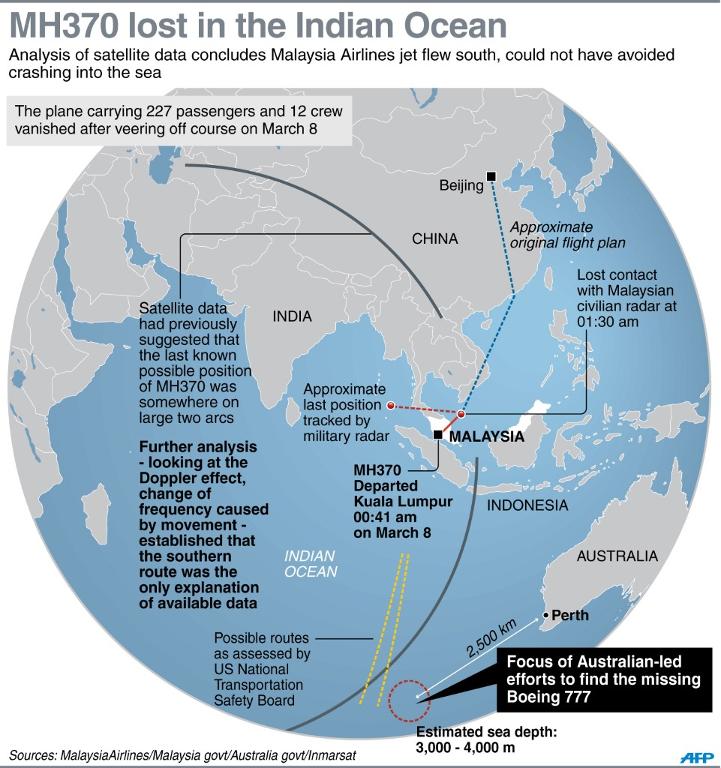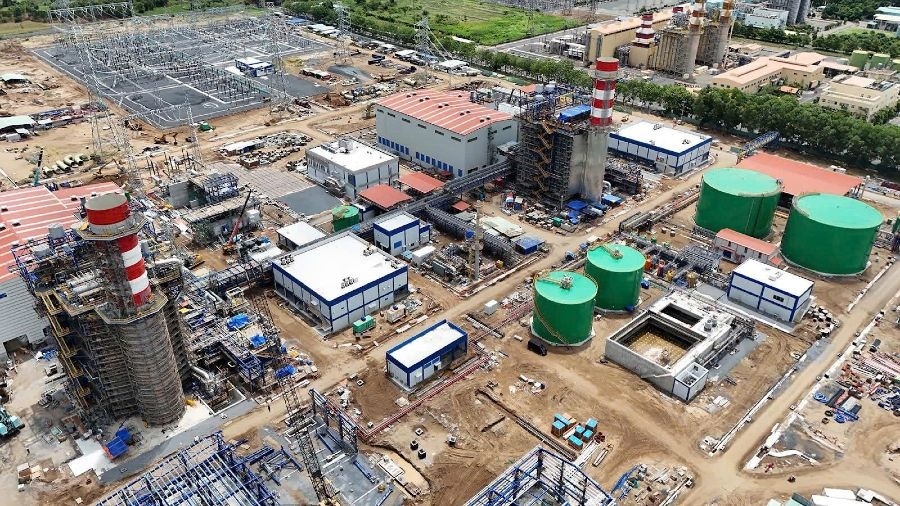MH370 search back on as weather improves

A Royal Australia Air Force AP-3C Orion takes off from RAAF Base Pearce in Perth, Australia to resume the search for missing Malaysia Airlines Flight MH370 in the southern Indian Ocean on March 26, 2014. (AP/Rob Griffith)
>> PM Lee expresses condolences to families, friends of those on MH370
PERTH: Planes and ships converged on the southern Indian Ocean on Wednesday, resuming the hunt for wreckage from Flight MH370 after weather conditions improved, as grieving passengers' families demand answers about the ill-fated jet.
Gale force winds, driving rain and mountainous seas prevented any sorties being flown from Perth in Australia's west on Tuesday, but 12 aircraft were deployed Wednesday, with South Korean planes joining the hunt for the first time.
"Today's search is split into three areas within the same proximity, covering a cumulative 80,000 square kilometres (30,000 square miles)," said the Australian Maritime Safety Authority which is coordinating the operation.
Australian naval vessel the HMAS Success, which was forced to leave the storm-tossed region, has returned and was conducting a surface sweep of a zone where two objects were spotted this week.
AMSA said four Chinese ships had also reached the search area, in the quest to find physical proof that the Malaysia Airlines jet went down in the remote seas, and clues as to why it veered off course and vanished on March 8 with 239 passengers and crew on board.
Australian Prime Minister Tony Abbott said the search -- now in a recovery phase -- would continue until there was no hope of finding anything.
"It is not absolutely open-ended but it is not something we will lightly abandon," he said ahead of a moment of silence in parliament in Canberra for victims of the doomed flight which included six Australians.
"The crash zone is about as close to nowhere as it's possible to be, but it's closer to Australia than anywhere else," he added in underscoring the remoteness of the search area as authorities seek to retrieve sunken or floating debris and the "black box" flight recorder.
In another complication, experts warned that a chain of undersea volcanoes runs directly through the search area, meaning the ocean floor is extremely rugged and constantly being reshaped by magma flows.
"It's very unfortunate if that debris has landed on the active crest area, it will make life more challenging," Robin Beaman, an underwater geology expert at Queensland's James Cook University told AFP.
"It's rugged, it's covered in faults, fine-scale gullies and ridges, there isn't a lot of sediment blanketing that part of the world because it's fresh (in geological terms)."
Abbott said "a considerable amount" of suspected debris had been sighted since the search began, although none has yet been retrieved.
"We are confident that some will be," he added.
The US Navy has sent a specialised device to help find the "black box" flight data recorder and cockpit voice recorder, along with a robotic underwater vehicle that can scan the ocean's depths.
Malaysia Airlines confirmed to AFP that the battery which powers the plane's black box will emit a locator signal of 30 days, once activated by contact with water, giving searchers less than two weeks to find a crash site.
Those efforts will be crucial in determining what caused the Boeing 777 to deviate inexplicably off its intended course between Kuala Lumpur and Beijing, and fly thousands of kilometres in the wrong direction.
Malaysia believes the plane was deliberately diverted by someone on board. In the absence of firm evidence, leading scenarios include a hijacking, pilot sabotage or a crisis that incapacitated the crew and left the plane to fly on auto-pilot until it ran out of fuel.
Two thirds of the passengers were Chinese, and relatives there have accused Malaysia of being deceitful and callous in their handling of the tragedy.
Scores of emotional relatives mounted a protest on Malaysia's embassy in Beijing on Tuesday, scuffling with guards and abusing the ambassador as they demanded to know what happened to their loved ones.
"Return our relatives," the family members shouted as they massed at the embassy gates. Another slogan went: "The Malaysian government are murderers."
Malaysia's ambassador to China Iskandar Sarudin later arrived at the hotel where relatives are staying, to face an angry tirade. Some shouted at him to kneel before them, while others launched a volley of abuse, calling him a "liar" and "rogue".
Malaysian authorities have defended their decision to release satellite analysis that determined the plane had plunged into the southern seas far off western Australia, possibly running out of fuel.
On Tuesday, they made public more details of the data used to conclude that the plane was lost.
It said the last complete contact between a satellite that was "pinging" signals to the flight came at 8:11 am Malaysian time (0011 GMT), with another "partial" signal eight minutes later.
The findings, by British satellite communications firm Inmarsat, suggest the plane was in touch nearly two hours after its scheduled 6:30 am landing time in Beijing, and right around the time it would have run out of fuel.
The analysis suggested the plane disappeared for good in the middle of the southern Indian Ocean but Malaysian officials said a precise location could not be determined.

What the stars mean:
★ Poor ★ ★ Promising ★★★ Good ★★★★ Very good ★★★★★ Exceptional
Latest News
More News
- Thailand seeks to promote digital training (November 04, 2024 | 16:14)
- Indonesia attracts foreign investment in technology sector (November 04, 2024 | 16:08)
- Tropical storm Trami leaves at least 24 people dead in Philippines (October 24, 2024 | 17:36)
- Singapore grants conditional approval for solar power import from Australia (October 24, 2024 | 17:27)
- ASEAN digital economy set to reach $2 trillion by 2030 (October 22, 2024 | 15:08)
- Thailand asks Laos to waive visa fee at border checkpoints to boost tourism (October 21, 2024 | 17:23)
- Laos pledges to continue efforts to empower girls (October 21, 2024 | 17:17)
- Chinese electric vehicle maker to build plant in Indonesia (October 21, 2024 | 17:12)
- Vietnam Elevator Association introduces Elevator Safety Application to the world (October 18, 2024 | 09:00)
- A taste of the future - the go-to spot at the Worldchefs Congress & Expo 2024 (October 15, 2024 | 16:11)




















 Mobile Version
Mobile Version